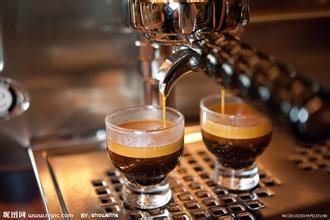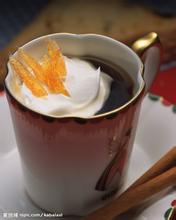Description of Flavor of Golden Manning Coffee introduction to varieties of Grinding scale by treatment method in Manor production area
Gold Mandrine Coffee Flavor Description Taste Manor Area of Origin Processing Grind Scale Variety Introduction
Mantelin coffee is considered to be the world's most mellow coffee, in the taste of mantelin, you can feel the obvious lubrication on the tip of the tongue, it also has a low acidity, but this acidity can also be clearly tasted, jumping slightly acid mixed with the most intense aroma, so that you can easily experience the lively factors in the mild fragrance. In addition, this coffee also has a light earthy aroma, some people describe it as herbal aroma. During the Japanese occupation of Indonesia in World War II, a Japanese soldier drank a very mellow coffee in a cafe, so he asked the owner, the name of the coffee, the owner mistook him for asking where you were from, and answered: Mandenin. After the war, Japanese soldiers recalled drinking "Mantenin" in Indonesia. So Indonesia asked the passenger to transport 15 tons of coffee to Japan, which was very popular. Thus the name of Mantenin spread, and the coffee merchant was now known as PWN. Known as mandheling, mandheling is found all over lake Toba in northern Sumatra. Sellers often label Lintong Lindong and Mandheling Mandheling coffee as dry processed. In fact, the pulp is often separated from the coffee seeds by a variety of mixing modes, more commonly a backyard wet treatment. Clever farmers put freshly picked coffee cherries into a crude peeling machine assembled from scrap metal, wood and bicycle parts. The peeled, sticky beans are then fermented overnight in plastic woven bags. The next morning, wash off the soft, fermented pulp and stickiness by hand. The silver-coated coffee is pre-dried on a sheet in the front yard and sent to a middleman's warehouse where the silver is removed and further dried. Finally, the coffee is trucked to Medan Port (capital of Sumatra) for the third and final drying. It has also been reported that in other Mandheling regions, after removal of the pericarp, the mucilage is allowed to dry and adhere to the beans, as is done in Brazil with semi-washing. After that, the dried slime and silver skin are removed by machine. Finally, the same two-stage drying process takes place, first at the warehouse of the middleman and then at the warehouse of the exporter in Medan Port.
Process with Sumatra characteristics. I describe these processes in such detail because it is not clear to what extent soil and atmosphere and unusual treatment techniques and three-stage drying each affect the formation of the characteristics of Linton and Mantenin coffee. Only one thing is certain. These treatments occasionally produce excellent coffee but are also extremely unstable. Only relentless picking in the export warehouse of Medan Port can guarantee the depth of texture and unique, understated richness of Lintong and Mandheling, emerging from the interference of other odors.

Important Notice :
前街咖啡 FrontStreet Coffee has moved to new addredd:
FrontStreet Coffee Address: 315,Donghua East Road,GuangZhou
Tel:020 38364473
- Prev

Introduction to El Salvador Mercedes Coffee Bean Flavor description Manor by Grinding scale treatment
El Salvador Mercedes coffee bean grinding scale method Flavor description Manor said the government imposed an additional 15% tariff on exported coffee in 1986, that is, an additional 15% in addition to the existing 30% tax. Taxes, together with unfavorable exchange rates, have greatly reduced the export of coffee and the quality of coffee. The government finally realized the great role of coffee in the national economy, such as solving
- Next

Description of the characteristics and flavor of Ugandan coffee introduction to the grinding scale of processing method in manor production area
Description of the characteristics and flavor of Ugandan coffee ● Santos NO2, Brazil, (Brazilian Santos NO2) comes from one of the largest coffee producing areas in the world because of its soft, gentle and smooth taste. Moderate acidity, rich and body, mild, unique and smooth flavor. If it is adzuki bean (17-18)
Related
- Detailed explanation of Jadeite planting Land in Panamanian Jadeite Manor introduction to the grading system of Jadeite competitive bidding, Red bid, Green bid and Rose Summer
- Story of Coffee planting in Brenka region of Costa Rica Stonehenge Manor anaerobic heavy honey treatment of flavor mouth
- What's on the barrel of Blue Mountain Coffee beans?
- Can American coffee also pull flowers? How to use hot American style to pull out a good-looking pattern?
- Can you make a cold extract with coffee beans? What is the right proportion for cold-extracted coffee formula?
- Indonesian PWN Gold Mandrine Coffee Origin Features Flavor How to Chong? Mandolin coffee is American.
- A brief introduction to the flavor characteristics of Brazilian yellow bourbon coffee beans
- What is the effect of different water quality on the flavor of cold-extracted coffee? What kind of water is best for brewing coffee?
- Why do you think of Rose Summer whenever you mention Panamanian coffee?
- Introduction to the characteristics of authentic blue mountain coffee bean producing areas? What is the CIB Coffee Authority in Jamaica?

